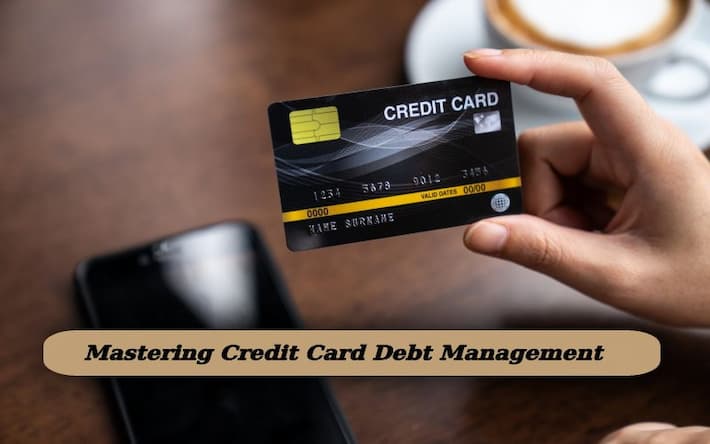Managing money can be confusing, especially regarding credit card debt. The interest keeps increasing, and you end up owing more and more money. However, if you pay your credit card bills on time, the problem can get better.
There’s a simple way to handle this. Make a smart plan to manage your debts, and focus on paying off the most important ones first. It will help you beat debt and live without financial worries.
Understanding Credit Card Debt
Credit card debt is the residual balance owed to your credit card provider, accrued through purchases, balance transfers or cash advances. The intrigue, however, lies not in its inception but in its potential for rapid growth. The catalyst? Steep interest rates.
Each remaining balance on your credit card falls prey to a specific Annual Percentage Rate (APR), and any balance left unpaid within the grace period accrues interest on the outstanding sum, pushing your debt upwards. Given the compounding nature of this interest, the longer the debt lingers unpaid, the more formidable it becomes, underscoring the urgency for proactive debt management.
The Importance of Prioritising Payments
- Curbing interest growth: A strategy prioritising credit card payments can staunch the flow of interest accumulation. By addressing high-interest debt first, the total payable sum can be effectively reduced over time.
- Enhancing credit score: Prioritised payments can fortify your credit score, boosting your borrowing prowess for future ventures.
- Fostering financial stability: Timely payments liberate more credit for necessary expenses and sidestep late payment penalties, fostering an environment of overall financial stability.
- Psychological gratification: Paying off debt, especially big amounts, feels great and relieves the stress of money problems.
Techniques for Mastering Payment Prioritisation
- Try the snowball approach: The debt reduction method involves paying off small debts first and using the freed resources to tackle larger debts, creating a snowball effect. This approach brings a sense of accomplishment and eases the psychological burden of financial struggles. It provides early tangible results, motivating continued efforts. With each debt conquered, momentum builds, making the process more efficient.
- Adopting the avalanche methodology: This technique presents an intriguing alternative to the snowball approach. It promotes the settlement of high-interest debts as an initial priority. While tangible results may initially appear elusive, this method effectively curtails cumulative interest, expediting total debt elimination.
- Leveraging balance transfers: This strategy hinges on transferring existing debts from high-interest credit cards to alternatives offering lower rates or even those extending a zero-interest period for balance transfers. It consolidates debt and forestalls additional interest accrual, creating a window for balance liquidation.
- Exceeding the minimum payment requirement: Keep making minimum payments on all debts. If you have extra money, use it to pay off the debt with the highest interest rate. This combines the benefits of both the avalanche and snowball methods. It’s an efficient way to reduce debt and save money on interest.
Strategies for Maintaining Financial Discipline in Credit Card Usage
Here’s how you can maintain financial discipline in your credit card usage:
- Full balance remittance: Make it a goal to clear your credit card balances every month. Doing so not only circumvents interest accrual but also maintains a low credit utilisation ratio—a factor that could boost your credit score.
- Implementing expenditure limits: Self-regulate by establishing an expenditure ceiling for your monthly credit card usage, ensuring it’s harmonious with your budget. This self-governance can curtail impulsive buying and foster financial prudence.
- Statement audit: A regular audit of your credit card statements can flag any anomalies—unauthorised charges, potential errors, or instances of identity theft. It further enables you to oversee your spending and detect wasteful expenditure patterns.
- Using budgeting tools: Use budgeting applications and online credit card apps to streamline the monitoring of your spending and overall financial management. Such tools offer a graphical depiction of your spending habits, simplifying expenditure control.
- Intentional card usage: Pause to reflect on the necessity of any purchase before swiping your credit card. It can deter unnecessary spending and help in maintaining financial discipline.
Conclusion
Mastering credit card debt management and proficient prioritisation of payments emerge as critical components of a sound financial strategy. Adopting the above mentioned strategies provides a clear path out of debt and fortifies your financial health, placing you firmly in command of your financial narrative and cultivating a more secure future.
Table of Contents
